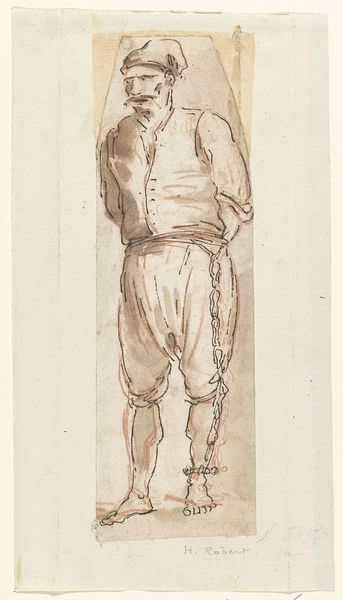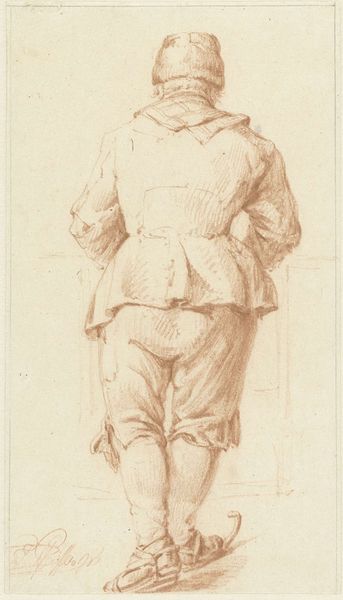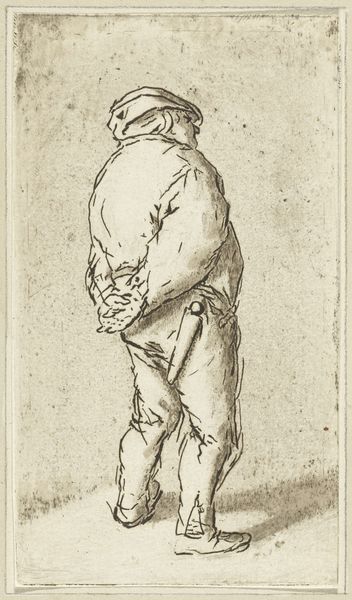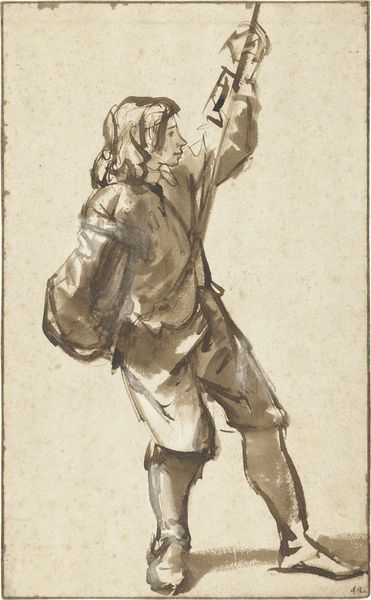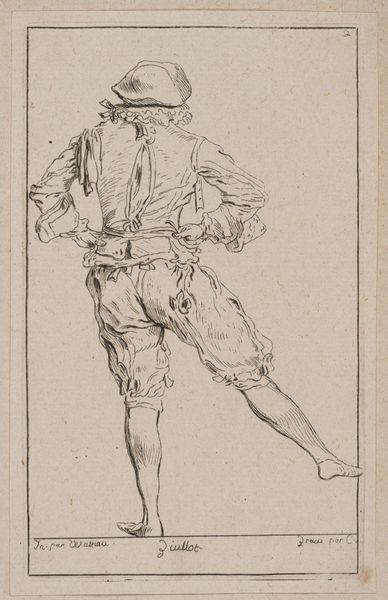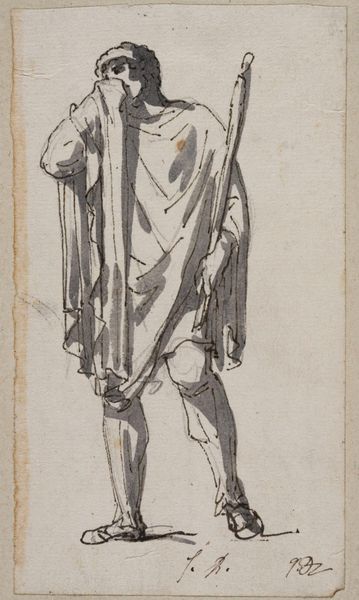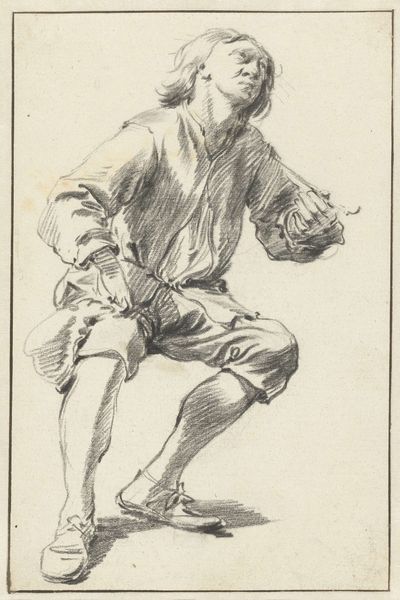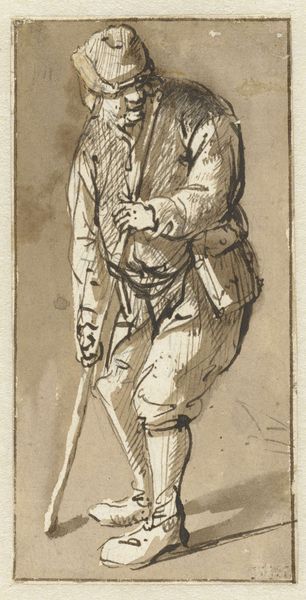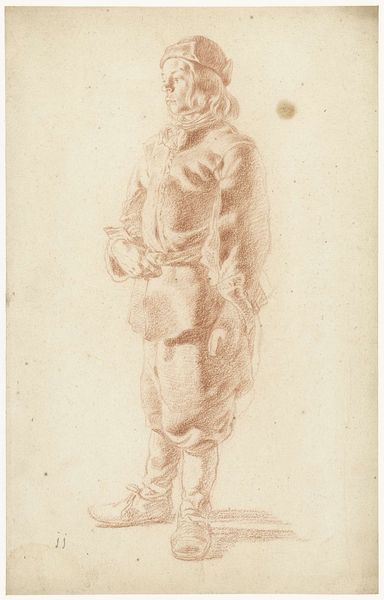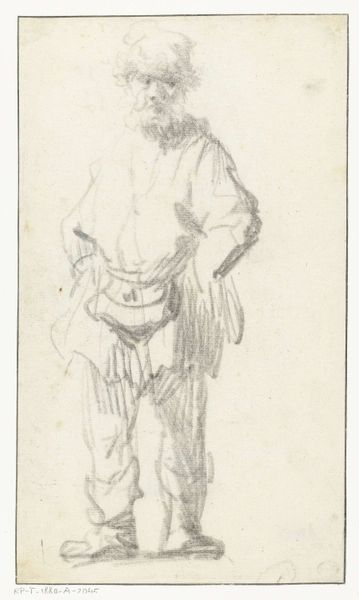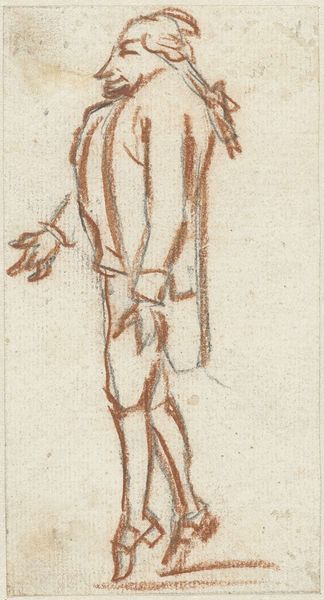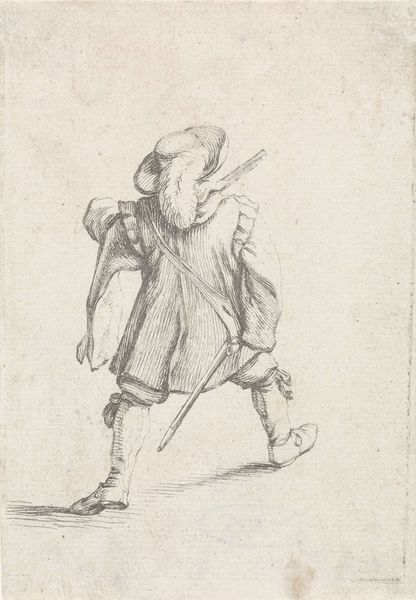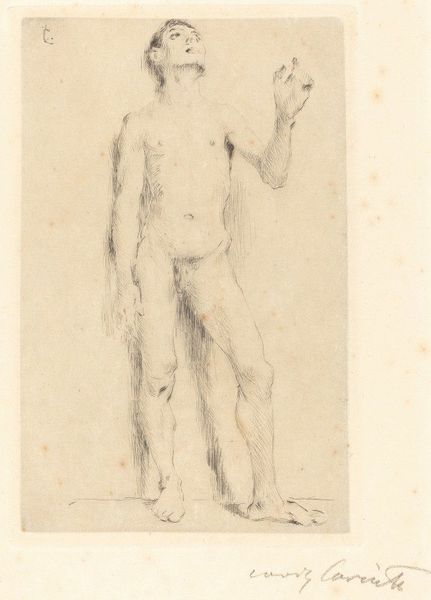
drawing, ink
#
portrait
#
drawing
#
baroque
#
dutch-golden-age
#
figuration
#
ink
#
genre-painting
Dimensions: height 153 mm, width 77 mm
Copyright: Rijks Museum: Open Domain
Curator: This is "Standing Man, Slightly Bent with Hands on His Back" by Isaac van Ostade, created sometime between 1631 and 1649, rendered in ink. My immediate reaction is a feeling of weariness, or perhaps resignation, looking at his posture. Editor: Indeed. The slight slump of his shoulders and the way he holds his hands suggest a man carrying burdens, both literally and metaphorically. We need to understand the societal context: who was van Ostade depicting, and what message was he conveying? Dutch Golden Age art frequently portrays everyday life, but always through the prism of social and economic power. Curator: Right. His clothing speaks to his station—certainly not wealthy, perhaps working class. Consider also the conventions around portraiture at that time; the choice to portray him in this almost vulnerable stance flies in the face of how those of high standing were portrayed. I see a connection to contemporary portrayals of marginalized bodies. Editor: The cap, the plain tunic... they lack the flourish of nobility. The color is key here, too. It seems the artist used brown inks and perhaps watercolors? Brown often embodies humility and earthiness—recalling monastic orders who also dressed simply. Are there earlier iterations in visual culture from which this image borrows? I am thinking of religious figures depicted in moments of introspection. Curator: Absolutely. Think about the way religious paintings often rendered saints in moments of quiet contemplation, heads bowed, eyes downcast. Here, we might see van Ostade taking a known visual trope and applying it to an ordinary man. We're dealing, I think, with a depiction of humanity shorn of its idealized layers. Editor: Looking closer, there's something almost endearing in the slight upturn of his mouth, even a shadow of humor. It offers a contrast, disrupting the heavier implications of weariness we discussed. Could this posture denote something simple, such as just someone thinking? Curator: It's in moments such as that, these visual "winks," if you will, that keep me returning to art from the Dutch Golden Age. Editor: Van Ostade invites questions, prompts further conversation. And visual culture offers many perspectives.
Comments
No comments
Be the first to comment and join the conversation on the ultimate creative platform.
